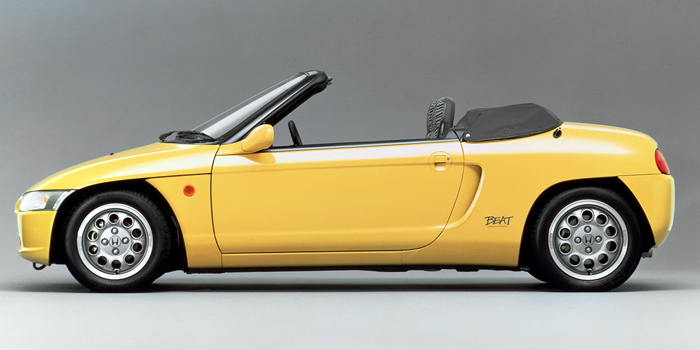
If you want to find out why Honda has such a great appeal to every car enthusiast, you just have to take a look at one of the company’s smallest cars, the Honda Beat from 1991. Within its tiny size it contains every value, characteristic and quirk that gave Honda its reputation. The Beat is a small 2-seat roadster with a 3 cylinder midship positioned engine that powers the rear wheels. Its size and performance are dictated by the rules of the Kei-car class in Japan, where cars under 3.3m length with engines up to 660cc and under 64ps had some insurance and tax advantages (in 1998 length increased to 3.4m). Only a year before Honda had launched the groundbreaking NSX and the Beat was a smaller version that not just looked similar but by being a bespoke design it kept the essence of the NSX concept but optimized it for its size and role.---
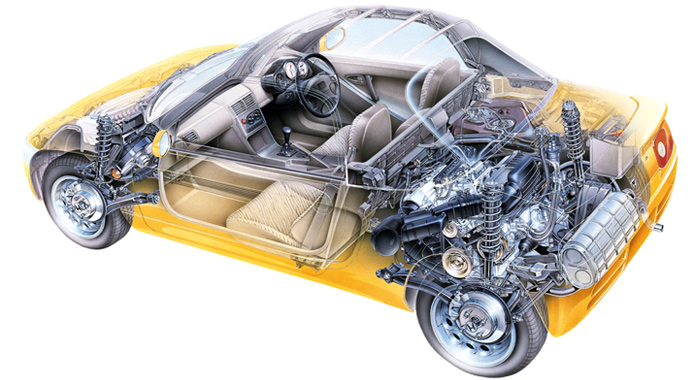
The Beat is designed in such a way that it allows a very good weight distribution with low polar moment of inertia (almost nothing is outside the overhangs) and acceptable interior room for the passengers. Clever packaging aids both room and performance. For example the small radiator is located at an angle under the spare wheel in the front of the car. There it is placed in the stream of air coming from the bumper inlets and it vents under the car. The engine is also offset on the left and alongside the opposite (on the right) placed fuel tank and battery evenly distributes mass in the rear. The center of gravity is located somewhere in the driver’s torso area thus making a small but crucial contribution to the handling of the car.
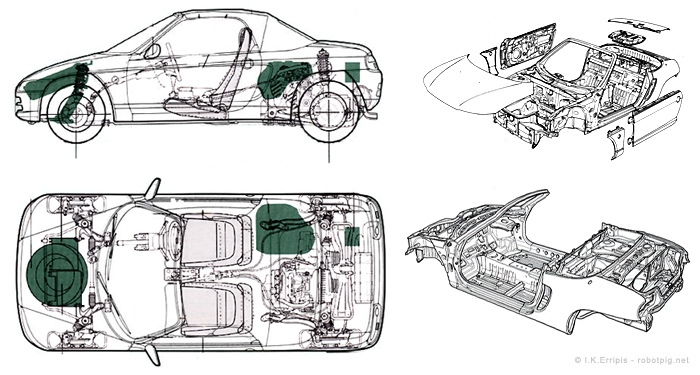
This isn’t an expensive or exotic car, apart from clever design and packaging the ingredients are simple and relatively cheap. The chassis is made from steel and not aluminum like NSX. Also instead of its sibling’s state of the art double wishbone / multi link and advanced kinematics suspension, Beat has a simpler suspension setup with McPherson struts in the front and multi-link (also with McPherson struts) in the rear. Another example is the interior, which may be minimalistic but not miserable. Nicely designed details like the instruments cluster give a motorcycle aura and are also simple and functional.
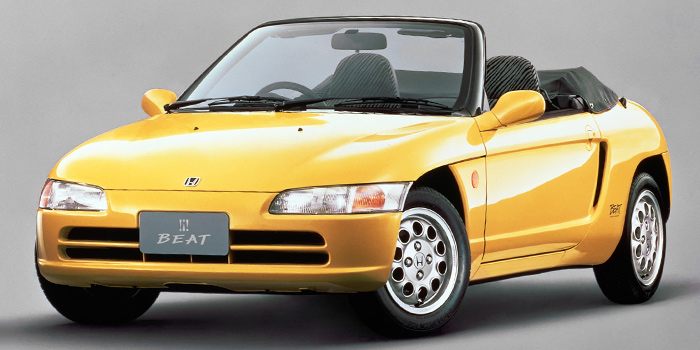
The exterior of the car is heavily influenced by NSX and in some sources credited it to studio Pininfarina (although it isn’t officially mentioned in the Italian studio’s portfolio).
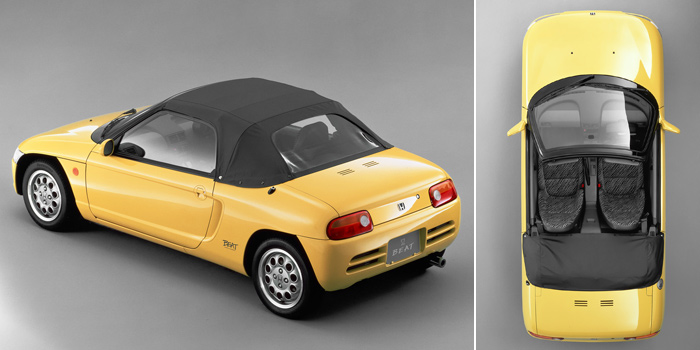
The core of every sportscar is the engine and the Beat may be tiny but it has a specially designed one. Most kei-class competitors use a turbo in order to reach the high specific output limit. However Honda opted for a natural aspirated unit that is closely related (conceptually) to a motorbike. It had a huge airbox and three separate throttle bodies (one per cylinder) with a very carefully designed inlet manifold. This arrangement has a (very Japanese) name and it was called MTREC. The engine is inclined at the front for lower center of gravity and better arrangement of the airbox (again in a similar to way to a superbike). MTREC was complimented by the very advanced PGM-FI ignition and multi-port fuel injection system, which may seem commonplace today but wasn’t so at the time.
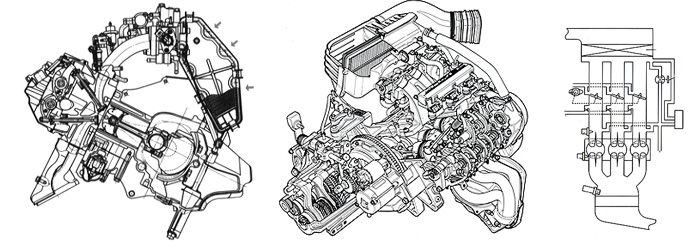
Another feature popular with Honda (even today) is the use of a single over head camshaft even in high performance engines. For the ultimate performance DOHC is still considered the best but Honda’s SOHC engines used either in cars or bikes (like the latest VFR1200) are compact and can achieve great specific horsepower with low fuel consumption.
The Beat stayed in production for 5 years, until 1996. It was sold officially only in Japan (RHD only). Its sales are almost negligible to the company’s budget but it was a halo product that showcased what one of the larger small companies (if we can say such a thing) can do by using clever design, simple ingredients and its core assets and values.
(all images/photos by Honda - cutaway designed by Hisashi Saito)
